Poll: When Does a Trail Become a Roadway?
Our sport was built upon the backs of previous wildland users, primarily hikers and equestrians. Many miles of those trails were less than perfect for cycling. If you were lucky, like the folks in Squamish and Pemberton BC, motorcycle trials riders also pioneered your trails (arguably some of best and most challenging mountain bike routes to this day). Regardless of who made them, initially, most backcountry trails were about two feet wide (60cm). They offered a technical challenge, a closer rub with natural surroundings and most of all, an escape from grinding up and down 20-foot-wide dusty fire roads all day. Mountain bikers spent two decades happily exploring them.
Made-for-Mountain Bike Trails
Inevitably, diggers began to modify existing trails with simple features - berms and jumps spiced up popular descents. Alternate lines and wooden features offered more technical options. Made-for-mountain bike trails launched the freeride movement, and on the heels of freeride's legendary diggers, popular ski resorts cashed in on the fun with dedicated downhill lines and no-sweat uplifts. As this evolution ("progression" if you want) moved forward, trails got faster and wider - in some cases, a lot wider.
Your idea of the perfect mountain bike trail probably hinges upon where you came from and at what point in the past 40 years you hopped onto the mountain bike bus. Old-school riders from the '80s and 90's are typically happy on any trail from a foot wide on up. Those who cut their baby teeth riding BMX jump lines might accept four to six feet (two meters) as a comfortable trail width. Riders who entered the sport during the relatively recent flow-trail era seem to relish five to ten foot wide lines, depending upon the features. Then there's the "Whistler effect."
The Whistler Effect
Downhill bikes added a whole new dimension to the sport in regards to speed and features. Whistler mountain bike park was the first to realize that catering to big bikes required new trail parameters. Almost anyone can go fast and big on a DH bike, but the delta between an average, good, and pro-level rider is so large that passing lanes became a necessity. You could drive a trophy truck down portions of Whistler's most famous lines, and make it down many others driving a narrow wheelbase UTV. Traffic concerns aside, bigger is arguably better at the bike park. Wide landings offer more options for tricks, monster berms ensure you'll roll into the next jump with ample speed to clear it - and there's also the need to expedite emergency vehicles to every corner of the property.
Whistler's flow-trail architecture became the inspiration for lift-accessed mountain bike parks worldwide. Many of today's most influential riders learned their skills racing DH, and riding features at lift-access trail centers. Builders who have sprung forth from those ranks are carving wider swaths and erecting more monumental mounds as they express their visions of the perfect mountain bike trail. The Joyride course doesn't seem out of place above Whistler Village, but a homemade version in the dedicated open space above your home town is sure to draw some criticism.
So, How Wide is Too Wide?
By definition, mountain biking is a contextual activity. Ski areas are basically curated clear cuts. No mountain bike trail could possibly be a negative impact in a place where hundred yard swaths have been leveled to facilitate snowsports. I'm not sure if it's the same in Europe, but in the Pacific Northwest, many mountain bike flow trails are constructed on logging leases that are slated to be clear cut, which makes a strong argument for ambitious builds. Most of our sport, however, occurs in shared environments - public lands intended to be preserved and protected and enjoyed by future generations. In such cases, size definitely matters.
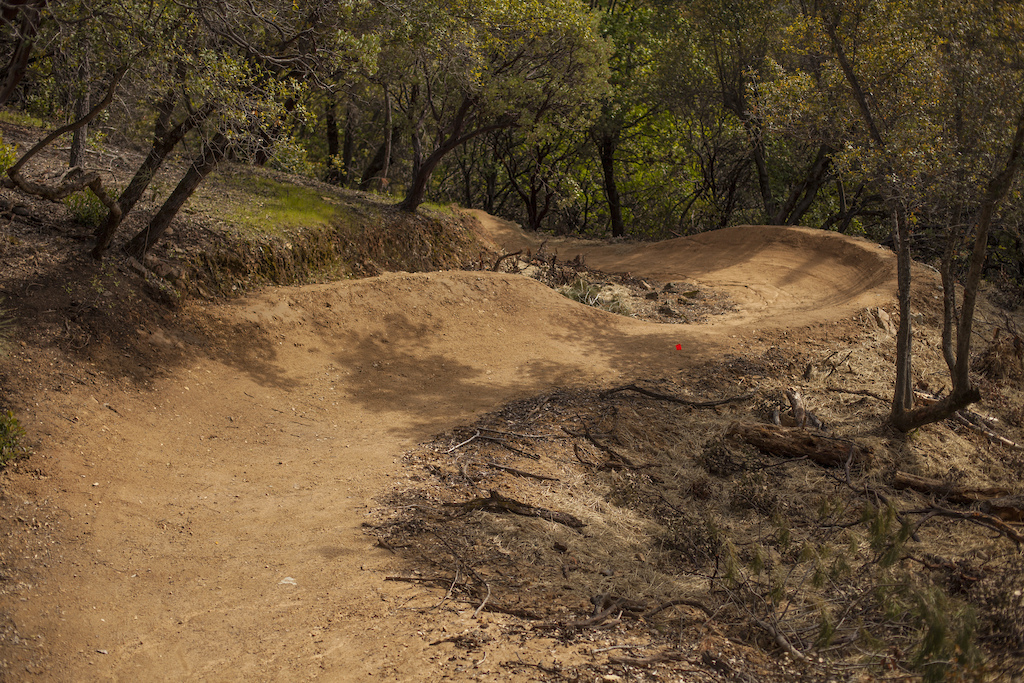
"Enticer" is a mile-long flow trail near Redding, California - a joint project in the Mule Ridge & Swasey Recreation area. Jaret Brantley photo
Sanctioned or otherwise, flow trails are the prevailing trend, and we're building them in various sizes and lengths on public lands, where other users neither share our aesthetic, nor have the slightest need for the features we hold so dear to our mountain bike experience.
Expressed or implied, there's a responsibility for those who recreate in shared natural environments to blend in. Some builders are masters at this. Some, not so much.
Flow trails are manufactured fantasy experiences for cyclists. (Disclosure: I absolutely love riding them.) The rare few I have hit that actually were placed carefully into the natural landscape were magnificent creations. The other 99 percent, with their spacious, curated corners and sculpted, institutionalized features look like travelling carnival rides in paradise.
Flow trails are manufactured fantasy experiences for cyclists. (Disclosure: I absolutely love riding them.) The rare few I have hit that actually were placed carefully into the natural landscape were magnificent creations. The other 99 percent, with their spacious, curated corners and sculpted, institutionalized features look like travelling carnival rides in paradise.
Have We Come Full Circle?
Did we reach the point where our skills and technology have eclipsed the singletrack experience? Do we need to carve private roads into the mountains to enjoy mountain biking at a higher amplitude? Will future riders depend exclusively upon dedicated mountain bike trails? Have we outgrown the concept of a shared environment? Tough questions. Fortunately, today's poll will be far more simple to answer:
Disclosure: Hero image of Nico Vink preparing the LooseFest XL course (by Eric Palmer) used tongue-in-cheek as click bait.
Author Info:
Must Read This Week
Sign Up for the Pinkbike Newsletter - All the Biggest, Most Interesting Stories in your Inbox
PB Newsletter Signup
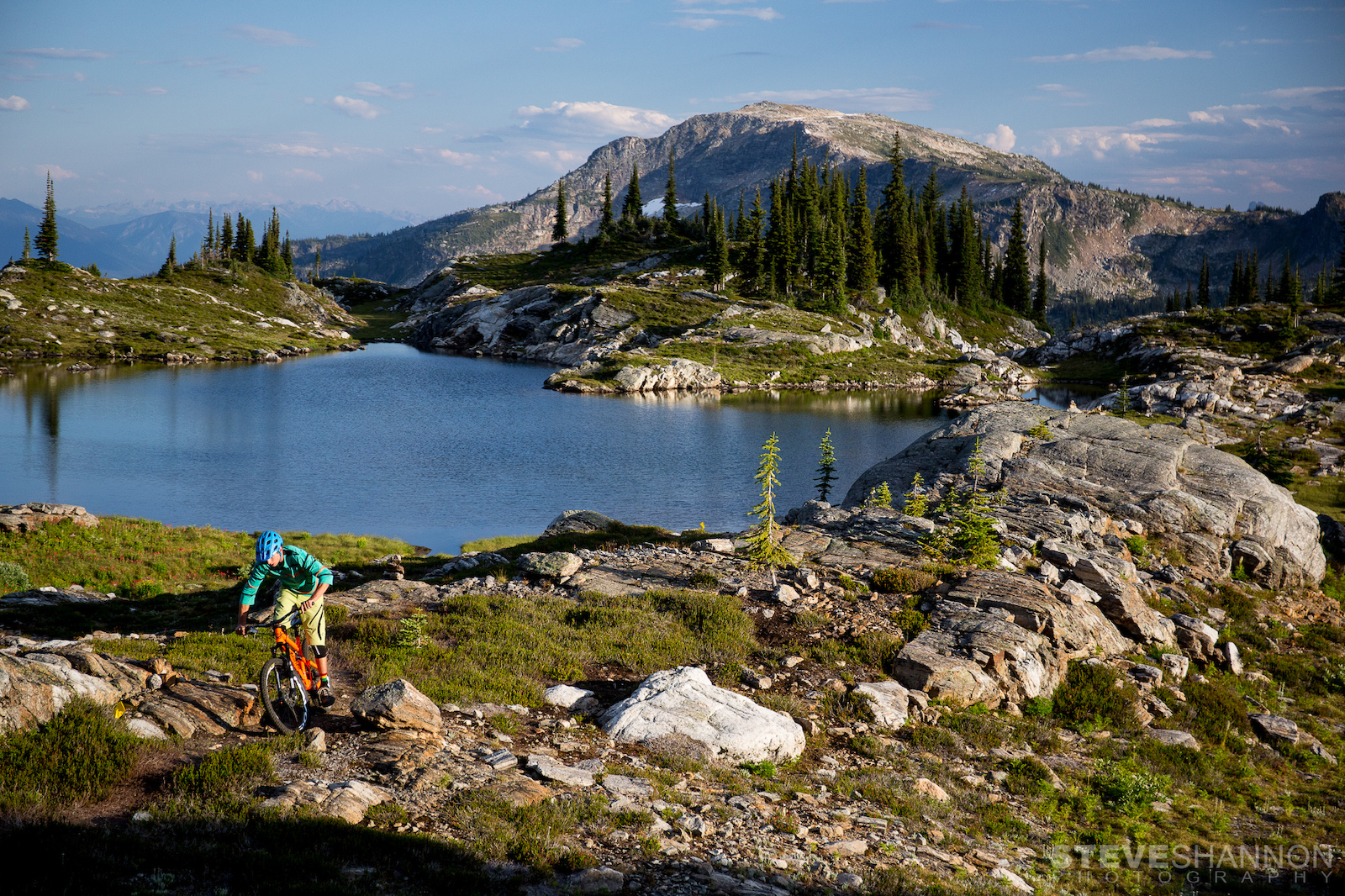
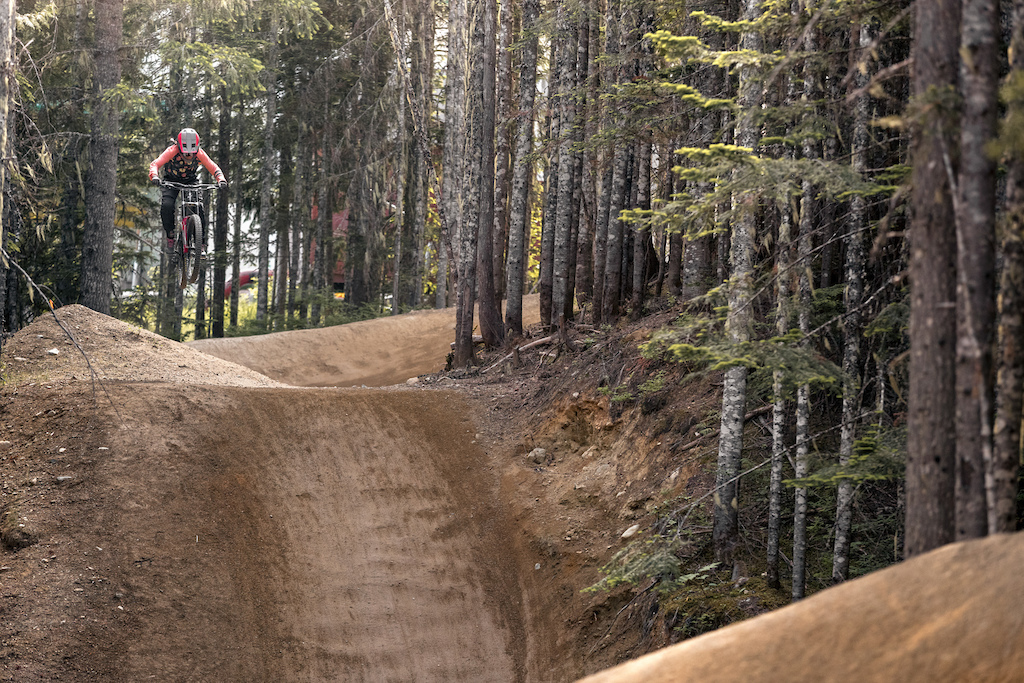

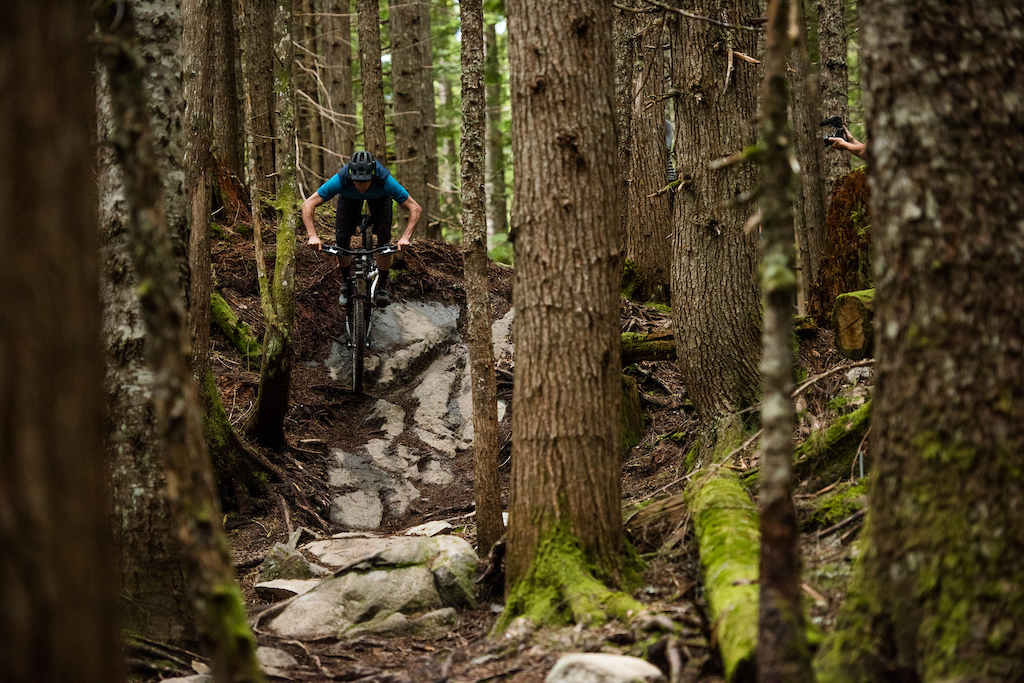

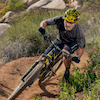
 Member since Mar 23, 2011
Member since Mar 23, 2011
This is probably the most odd and inaccurate poll I've seen on Pinkbike. "Derp is 1-2 ft. preferable or 3ft? HOW ABOUT 5FT?!"
Wtf is this shit?
The answer is that municipalities and IMBA and every other trail organization have an agreeement that helps SELL trail to locals. It's that the builders will design trails & make sure that first responders have easy access for extractions with a 4 wheeler.
It's the big giant hurdle all trail pitches are using to overcome the "danger & speed & remoteness" argument. They promise to make the trails built accessible for fire departments & rescue personnel. And it's MURDERING TRAIL DESIGN.
Modern MTB the last 5 or so years seems to be about making everything easier in both the bikes AND the trails.........
www.cc.com/shows/delco-proper
I see no reason to declare one best and moan about there being to much of whatever you don’t like. Ride what you want, it’s all fun.
I've indoctrinated a lot of "non riders" on these flow trails, that had i taken them on some of our more challenging trails, they would of told me to f*ck of, and probably wouldn't of been excited or inspired to continue riding a bike. So yea... its all about perspective.
As a veteran ebiker of two months, I demand all the haters on analog bikes accommodate for trails. But don’t make them too hard. Or too long. Haters. I’m having fun plus it allows me to ride a bike, something I thought I would never be able to do after I got Ebola of the heart.
Your welcome
You're welcome
nothing against bike parks BTW they are cool too
Personally i love big flow jumps but there is a special place in my heart for single track, and tech trails too. In my opinion biking is so diverse nowadays that if you decide what you like / dislike you are going to miss out on fun that you have decided is not for you.
Ride it all!! Dh, Freeride, Enduro, Dirt jump, Bmx, Xc, etc. It's all a learning experience, and the more trail types you can ride the more skills you will have.
It's your life don't limit your self.
Flow is a four letter word.
There is no reason to build a wide trail for a bicycle. The "trail machines" are a drug for the operators who cannot let them go, they are addicted to moving dirt. The municipalities love seeing a big project and eye popping excavation for their investment. The "trail" builder loves to show how much work they did and how big their project was. The millennial knows no other style of trail, and maybe can't even ride an old-school trail.
These wide trails are ecological disasters of erosion and waste. They remove the topsoil and flatten out all of the natural textures a real trail used to offer. They are boring and require jumps, berms and whoops to make them interesting for the millennial who needs to feel slight G-forces to pretend he is mtb'ing.
The original mtb trails were "rake-n-ride" trails that were on top of the natural terrain and encountered numerous features that made it interesting and sometimes challenging to ride over. They provided an experience of being in nature. They were broken in by riding so did not have improperly radius'ed turns and uninspiring straightaways.
Sometimes moto bikes were used in place of a rake, so the moto bike naturally created a trail that a bicycle would flow through naturally (again, no bad thought-out corners).
Natural terrain used to be a high consideration for where the trail meandered. How cool can we make the trail on this spot was the question. Can we make it even more challenging was another.
Now trails must be made so a beginner 12 year old girl who will ride once on her walmark bike can ride without being scared.
The terrain is mowed over, obstacles bulldozed away, flatness and gentle slope given priority, and erosion and damage and ruts soon follow. A roadbed in the woods that needs only for the asphalt truck to dump its steamy black contents to complete the road build.
My rake-n-ride trails last. They bench-cut themselves in just weeks. They retain their topsoil. They do not erode. They are fun to ride. They are not a blight on the natural setting. The offer the feeling of escape from society. They are fun to ride.
I'll stack my trail building chops up against anyone and will say that if you ride one of the (less than) two foot wide trails I've built and find that you are bored, then you should buy a quad .
I grew up on British single track trails ...... thin technical climbs.Wet roots and rocks followed by fast, tight swooping technical trails. You are forced to learn good bike handling skills early on without it being too terrifying or dangerous. Once you have some skill under the belt, going fast on these trails is a pure joy and a real challenge at speed.
I fully support making the trails more accessible to new generations...... but there has to be a wide variety of trails to ensure the right skills are learnt by the next generation. I will be taking my kids on single track ASAP and getting them the right skills quicker...... once they have them, we can go back to the ‘berm, berm, jump, berm , berm, jump, yawn, etc” trails.
Why build a 4m wide trail with only 1 good line through it? I dont have that kind of time!! But dont get me wrong, I love a good downhill pumptrack.
Mountain biking and skiing can both be viewed similarly as being backcountry (natural), off piste (resort off trail), and on piste (park/groomed).
Trail width is whatever suits the needs of that trail use.
I prefer backcountry in my riding and my skiing.
1) In some of our local parks we have built flowy trails with berms. The land manager likes this because it gets closer to their own multi-use standard of 4-5' wide and the local equestrians like that it's wide and smooth and not rocky. Also the soil is crap and a machine makes it sooo much easier to construct the large grade reversals that will hold up over time. Also I think the land managers see the relatively mild grade and smooth tread and think "This is fine. I can justify this to my boss if I have to." Basically it's a winning formula for expanding trails. I don't want to ride this kind of trail 7 days a week, but they're usually pretty fun IMO and require way less maintenance.
2) Limits to hours volunteers or land manager staff can/will work. A machine can save you thousands or tens of thousands of hours on a large trail build project. Sometimes trails are remote or hard to get volunteers to show up to build or maintain. A machine can help enormously. If a land manager wants to get something done in a timely fashion then a machine will allow them do that.
Other thoughts:
Also, some areas have very little rocks or roots in the soil, meaning that any trail you build is likely to be smooth and non-technical. In those areas machine building makes a lot of sense if you're okay with a modestly wider tread. In very rocky areas I would prefer hand building where you can really get granular in terms of keeping rock gardens and rocks in the tread.
If you build a machine built trail carefully, it doesn't have to be 4' wide. There are hand built trails in the county that are wider than some of our sections of machine built.
Finally, another reason I've heard of a machine being used is that the land manager either bough a mini-ex or borrowed one from a different department, and if they don't use it their boss will say, "Why did we buy that mini-ex if we don't use it for something?"
For many areas it probably makes sense to employ a mixture of building techniques that result in trails with a variety of widths and technical features.
The first one, “If you can’t stay on this trail, Don’t Ride It!”. Second one, “These are Not cow trails”.
Although not technical it was challenging to ride a 12” trail with not cow shit in the middle of it.
A)Tour de France road gap jump.
Baddum Tish!
I now need to see this
¿
As we progress as riders, the trail starts to look different and faster lines open up.
I love trails most folks can enjoy but also have difficult options for advanced shredders.
Minds blown on the daily showing them whats possible!.
Don’t use ebike in your posts unless it is a necessary part of the discussion.
I’d suggest the same if you were talking about your sexuality ... no one cares but you.